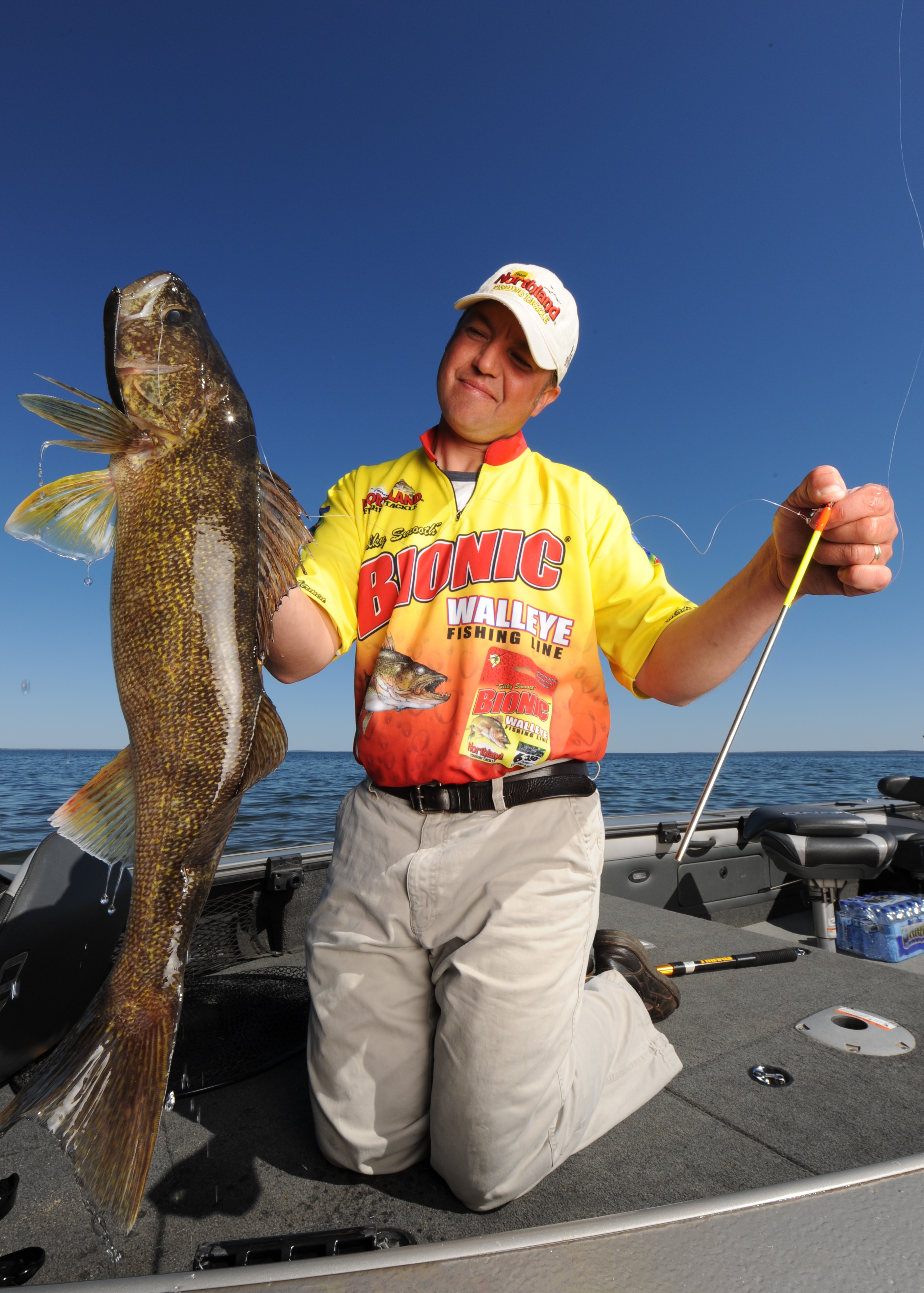
Sinkers play a bigger role in putting walleyes in the boat than many anglers realize. That’s the opinion, based on years of experience, of renowned fishing guide and Team Northland member Tony Roach.
He isn’t just talking about a sinker’s weight, but its type and style, and how they can enhance the productivity of any live bait or spinner rig. He breaks it down this way:
Walking Sinkers: Also called “boot” or “shoe” sinkers, walking sinkers such as the Roach Walker have a unique shape. Narrow at the leading end, with a bulbous behind, they can slide through weeds, yet still offer plenty of heft for their overall size. In the spring and fall, Roach commonly uses a heavy walking sinker to pin a large minnow to the bottom on a short lead-in deeper water.
Bottom Bouncers: Northland’s Rock-Runner® Bottom Bouncer is a traditional style bouncer and Roach’s go-to in many situations, especially when the bottom is snaggy rock or broken bedrock and the rig features a shorter snell. “It keeps the bait or spinner rig in the right position above the rocks at all times,” he says.
Slip Bouncers: Bottom bouncers that allow free line movement, like the Slick-Stick® and Rock-Runner® Slip, have a place in Roach’s arsenal, too. “Both are great for power rigging,” he says, “when walleyes are active and you want faster-trolling speeds. They’re heavy enough to keep the mainline more vertical as you move along. Yet, you can feed line on a bite if you need to.” Though the Slick-Stick® was developed to slide through rig-eating rocks, Roach says it’s ideal for fishing in the mud and silt because its extreme length keeps the bait riding high, out of the muck.
Bullet Weights: Roach uses these conical sinkers when targeting walleyes in the weeds, explaining that their streamlined shape allows them to snake through the weed tops without getting snagged.
Though the style is important, Roach adds that weight is just as critical. A sinker that’s a little too light, or a touch too heavy, will produce far fewer hits than one that’s the ideal weight. The catch is that you have to figure out what’s “ideal” when you’re on the water and can determine how wind, current, and wave action should influence your selection.

